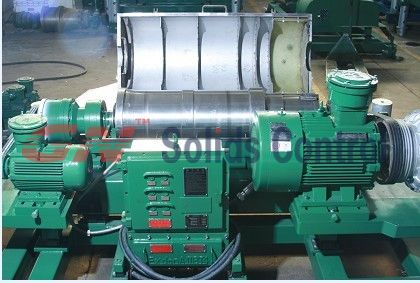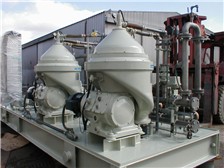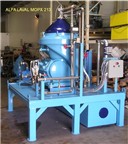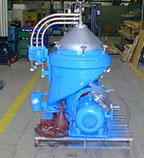Marla Singer
Zero Hedge
July 2nd, 2010
source: www.prisonplanet.com
At least back in 2009 the most promising targets for damaging the Iranian nuclear program, specifically the weapons related development, were Plutonium production facilities (characterized primarily by the Plutonium Production Heavy Water Nuclear Reactor in Arak) and facilities critical to the “Nuclear Fuel Cycle” (most obviously the Uranium Enrichment Facility in Natanz and the Uranium Conversion Facility in Esfahan). The Center for Strategic and International Studies’ Abdullah Toucan released a detailed report comparing the mission requirements of strikes on these (and other) facilities with Israel’s capabilities and concluded the mission was within Israel’s grasp operationally.1 Normally we would call this report a “must read,” but instead we’ve read it so you don’t have to, as well as added some of our own research and secondary sources.

The report also examined the ballistic missile strike option and delved into some of the political and instability costs that an attack would extract (which we ignore for the purposes of this discussion). Those sections are well worth reading, even if the political reality on the ground has changed since early 2009.
The Esfahan facility converts U3O8 to UF6 (Uranium Hexafloride), an interval product on the way to producing highly enriched (read: weapons grade) material.
The enrichment facility at Natanz is a gas centrifuge plant used (in theory) to process UF6 into 3-5% concentrations of U-235 for use in light water reactors (which has the unfortunate side effect of producing some 90% U-235, read: weapons grade uranium). This is the famous underground centrifuge facility. It isn’t clear exactly how many centrifuges Iran is operating here (or elsewhere), but 1,000 is enough to produce around 20 kg of highly enriched uranium per year. Iran admitted to the IAEA that it had 3,800 operational centrifuges here in late 2008. About 7,000 are thought to be operating today. Iran publicly aspires to installing 50,000 centrifuges in the Natanz facility in “the next few years.” The exact number is something of a mystery.
In addition, once operational, the Arak heavy water reactor has the potential to spit out about 8kg of weapons grade plutonium per year. It is expected to become operational this year or in 2011, and after some warm up, would be at near full capacity to generate electricity (and plutonium) in 2013-2014.
How Much? How Long?
The amount of fissile material required to create a nuclear weapon varies by the method of initiation. In the case of the simple “uranium gun” (using high explosive to propel one sub-critical uranium projectile into another sub-critical uranium mass such that the total mass is super-critical) 20-25 kg of highly enriched uranium is required. As a practical matter, more is likely to be used in a working weapon. While the simplest design, the gun method is highly inefficient and not thought to be practical for plutonium weapons as plutonium’s higher neutron emission rate means that plutonium criticality begins long before the masses meet. Uranium has similar issues that must be overcome with sufficient uranium projectile speed.
The amount of material required for a weapon can be reduced by shifting to an implosion type weapon. In this case, rather than using two sub-critical masses, a single sub-critical mass is squeezed together until it becomes super-critical. High explosive is typically used, and the weaponization process is therefore complicated by the design and precision milling of high explosive around a fissile core with sufficiently symmetric detonation to squeeze the core evenly into a small mass. Timing of multiple detonators in the high explosive around a fissile core is the key engineering challenge for these weapons, but as little as 15 kg of high enriched uranium or 6 kg of plutonium is theoretically sufficient to enable a crude implosion weapon. Again, practical weapons will be likely to require more.
Efficiency of the reaction is a major factor in yield, and inversely proportional to weaponization development time. Crude weapons are not likely to be efficient, and at the low end one might assume 10 kiloton yields for smaller weapons.
Bear in mind, however, that one does not have to create an actual fission weapon to cause quite a bit of trouble. Even conventional explosives, when used to spread highly enriched material, have the potential to render wide swaths of land uninhabitable for long periods. In this context, adding the “weaponization development” time required to design and test a working fission bomb might be a bit of wishful thinking.
Picking Targets.
The centrifuges required to produce weapons grade uranium are a particularly vulnerable part of the nuclear fuel cycle, particularly while operating, as it takes very little in the way of physical trauma to destroy one. In addition, given their precision manufacture and the difficulty in replacing them, they are at least partially vulnerable to bottleneck and control via sanctions or embargo. Additionally, it is highly complex to spread individual centrifuges out, meaning they are usually operated in banks of over 1,000 and “cascaded” into one another to produce more and more enriched product. This presents a tempting, concentrated target.
Clearly, the Iranians recognize the alluring nature of the Natanz facility, given the lengths they have gone to in order to protect it. The enrichment facilities were initially built 25 feet underground with 75 feet of dirt above concrete ceilings and walls in 2003. Reportedly the facility was further hardened in 2006. AAA sites now ring the area making “spot the Iranian air defenses” good sport with Google Earth.2

So we’ll take 600,000 some square feet of concrete building…
and it’s gone. (Iran’s Natanz facility 2003-2004) Golf course planned in 2012!

There Goes The Neighborhood!
Air Defense Sites (probably a combination of Skyguard radar controlled
35mm and 23mm Anti-Aircraft Artillery) sprout up SE of Natanz between 2006 and 2009.

Valuable Iranian Real Estate Near Natanz
The Evolution of an Anti Air Site (probably radar controlled 35mm) 2005-2009

35mm AAA Near Natanz3
Both Arak and Esfahan are above ground, and therefore vulnerable facilities. But even in the case of the Natanz facility, the 5,000 GBU-28 penetrating munition is likely enough to deal with even the thick earth/concrete defenses. The issue is one of size. At over 646,000 square feet of underground facility more than 20 would be required. Of course, any significant losses among the strike aircraft would limit the damage.
The Limits of Iranian Air Defense?
Amusingly, Iran is rumored to have acquired 10 Pantsyr S-1E systems from Syria in 2007. These mobile, tracked units are generally thought to be effective for critical facility protection and can be deployed in linked networks. This is comic given what appears to be the total ineffectiveness these systems demonstrated against the Israeli attack on Syrian facilities in September of 2007. Presently, the rumor is that the Israeli’s used sophisticated jamming and/or cyber attacks on the advanced Russian weapons to blind them completely during the raid.4 It is not clear that Pantsyr systems were the only anti-air to be defending the Syrian site either. The Pantsyr is the next generation of the SA-19 system and many anti-air systems use radar and fire control units similar to the Pantsyr’s 1RS2-1E and 2RL80E units. Potentially vulnerable also are the Russian Tor-M1 systems, of which Iran has liberally partaken.
Traditionally, the “Southern Route” for an Israeli attack (across the southern end of Jordan, into Saudi Arabia and then Iraq or Kuwait through to Iran) was discounted given the political ramifications of overflying Jordan, Saudi Arabia and Iraq. Despite this, if the Israelis are determined to conduct the attack unilaterally, and rumors of Saudi permission for an overflight5 6 prove true (the Saudis denied this in 2009 and 2010)7 8 the only operational constraints would be the possibility of American fighter aircraft (which are the only armed aircraft flying over Iraq at present) and air defense units firing on Israeli strike groups, or Jordan picking off the plans during their short transit. It is difficult to imagine American units firing on Israeli planes (especially since any Saudi agreement was almost certainly mediated by the U.S. State Department), making this route a potential “beg forgiveness instead of ask permission” approach.
Assuming the use of Israeli F-15E aircraft for GBU-28 delivery an attack on Natanz, Esfahan and Arak would require about 30 ground attack aircraft (a mix of F-15Es and F-16Is) and 40 anti-air defense and anti-air fighters (probably F-16Cs). This works out to basically all of Israel’s F-15E craft and a good slice of the F-16s on hand, but it is far from impossible.
Obviously, assistance from the United States would reduce the mission load, and increase the margin for error. But will it be forthcoming?
- 1. Abdullah Toukan, “Study on a Possible Israeli Strike on Iran’s Nuclear Development Facilities,” Center for Strategic and International Studies (March 16, 2009).
- 2. “The Bluffer’s Guide: Fortress Iran” by “Planeman” is essential reading (and viewing) for the amateur air-defense analyst.
- 3. Source: Planeman
- 4. “Israel Shows Electronic Prowess,” Aviation Week (November 27, 2007).
- 5. “Saudis give Nod to Israeli Raid on Iran,” The Sunday Times (July 5, 2009).
- 6. “Saudi Arabia Gives Israel Clear Skies To Attack Iranian Nuclear Sites,” The Sunday Times (June 12, 2010).
- 7. “Riyadh Denies Israel Overflight Report,” Foreign Policy (July 7, 2009).
- 8. “Saudis Deny Report They Will Allow Israeli Planes Over Country,” Israel National News (June 13, 2010).












